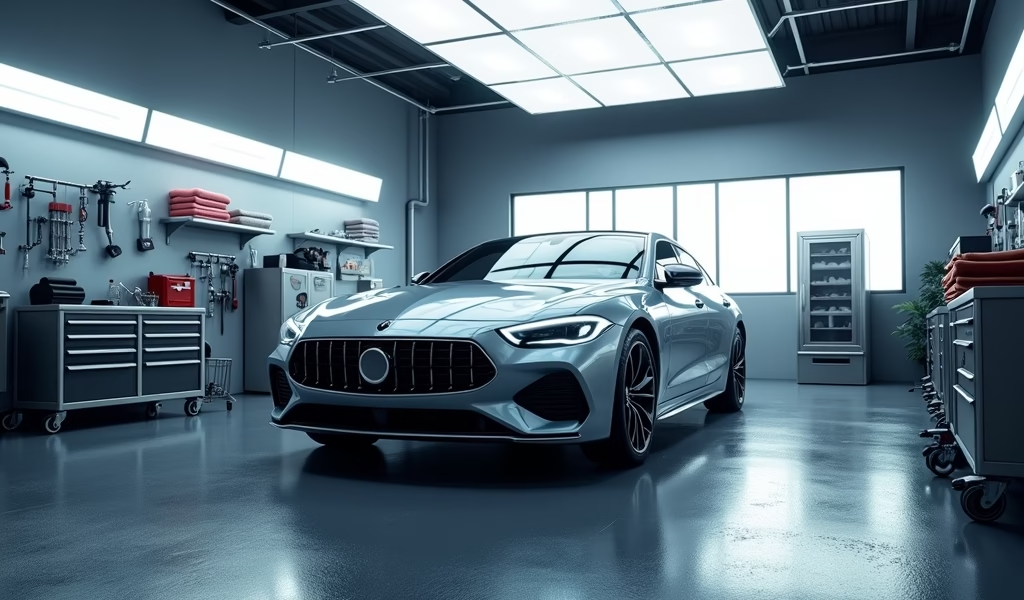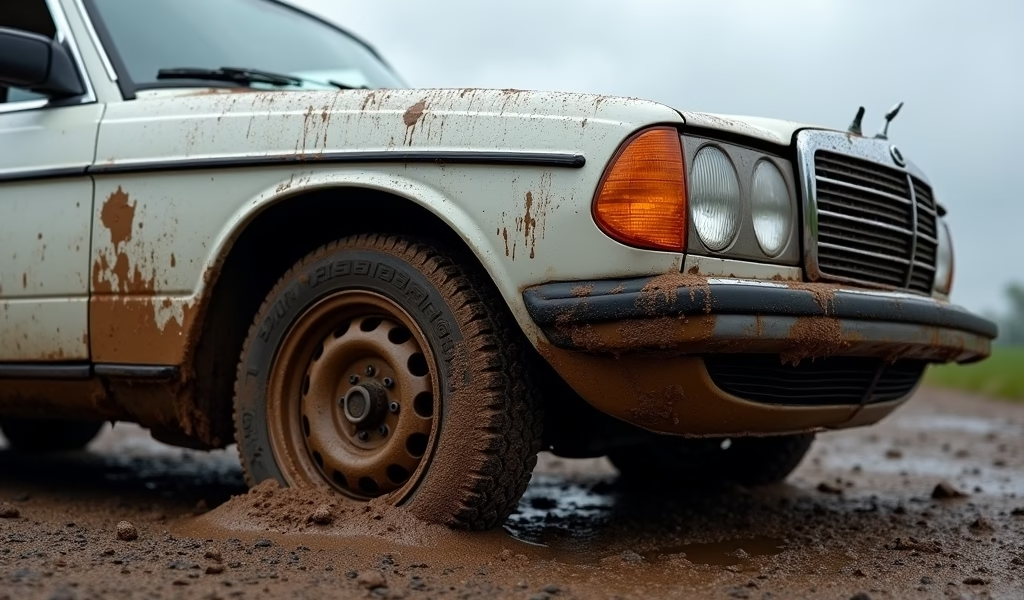Overview
This article outlines seven professional car care techniques to maintain 2023 vehicle models, including toothpaste headlight restoration, DIY interior cleaning solutions, WD-40 for dashboards, preventative maintenance calendars, using coffee filters for detailing, penny tire tread tests, and strategic washing schedules. These practical methods help preserve both the appearance and mechanical integrity of new vehicles, ultimately protecting resale value and extending vehicle lifespan with minimal expense.
Table of Contents
- Introduction to 2023 Cars for Sale & Pro Car Care
- Hack #1: The Toothpaste Headlight Restoration Method
- Hack #2: DIY Interior Cleaning Solutions That Work Wonders
- Hack #3: The WD-40 Dashboard Shine Technique
- Hack #4: Preventative Maintenance Calendar System
- Hack #5: The Coffee Filter Detail Trick
- Hack #6: Penny Tread Test for Tire Health
- Hack #7: Strategic Washing and Waxing Schedule
- Conclusion: Preserving Your 2023 Car’s Value
- Frequently Asked Questions
Introduction to 2023 Cars for Sale & Pro Car Care
The 2023 cars for sale represent some of the most technologically advanced and feature-rich vehicles ever to hit the pavement. As a mechanic with over two decades under my belt, I’ve watched vehicles transform from simple machines into sophisticated computers on wheels. But here’s the kicker – no matter how advanced these new models become, they still need good old-fashioned care and maintenance to keep their value and performance optimal.
If you’re eyeing those gleaming cars and trucks for sale at dealerships, you should know that proper maintenance isn’t just about preserving function – it’s about protecting your investment. The average new car in 2023 costs upwards of $48,000, according to Kelley Blue Book data. That’s no small chunk of change.
I’ve developed these seven professional car care hacks through years of hands-on experience. They’re like secret handshakes in the mechanic world – simple techniques that can save you thousands in unnecessary repairs and depreciation. Whether you’ve already purchased one of the sleek 2023 models or are still browsing new vehicles for sale, these tips will help you maintain that showroom shine and peak performance for years to come.
Let’s dive into these practical, tested methods that don’t require a mechanic’s garage or specialized equipment – just a bit of elbow grease and regular attention.
Hack #1: The Toothpaste Headlight Restoration Method
Nothing ages a car faster than foggy, yellowed headlights. On 2023 cars for sale, the headlights are crystal clear, but exposure to UV rays can cloud them faster than you’d think. This not only looks terrible but can reduce visibility by up to 50% – a serious safety concern when driving at night.
Here’s my mechanic’s secret: regular toothpaste (not gel) contains mild abrasives that work wonders on oxidized headlight covers. The process is as simple as it is effective:
- Clean the headlight surface with soap and water, then dry completely
- Apply a quarter-sized dollop of white toothpaste to a clean microfiber cloth
- Rub the paste in circular motions across the headlight for 5-10 minutes
- Rinse thoroughly with clean water and dry
- Apply a thin layer of car wax to prevent future oxidation
This method works because toothpaste contains fine polishing agents similar to commercial headlight restoration kits, but at a fraction of the cost. I’ve seen this trick transform headlights that looked like they were covered in cataracts into crystal-clear beacons.
For severely yellowed headlights, you might need to repeat the process 2-3 times. It’s like peeling away years of aging from your car’s “eyes,” giving it that fresh-from-the-showroom appearance again. Just remember to apply a UV sealant afterward, or you’ll be repeating this process every few months.
Hack #2: DIY Interior Cleaning Solutions That Work Wonders

The interiors of 2023 cars for sale feature sophisticated materials that require proper care. I’ve seen far too many beautiful new vehicles ruined by harsh commercial cleaners that dry out leather or damage touchscreens. Instead of spending a fortune on specialized products, I recommend these homemade solutions that are gentle yet effective.
For leather upholstery, mix equal parts white vinegar and linseed oil. This combination cleans while conditioning the leather, preventing it from drying and cracking. It’s like feeding your leather seats a nourishing meal rather than stripping them with chemicals. Apply with a microfiber cloth and watch as your seats regain that supple, new-car feel.
For touchscreens and displays (which are abundant in 2023 models), skip the window cleaner – it contains ammonia that can damage anti-glare coatings. Instead, use a 50/50 mix of distilled water and white vinegar on a microfiber cloth. These high-tech interfaces are the heart of your vehicle’s command center – treat them with the respect they deserve.
My favorite carpet cleaner combines three tablespoons of dish soap, one-third cup of white vinegar, and two cups of warm water. For stubborn stains, make a paste of baking soda and water, apply it to the stain, let it dry completely, then vacuum it away. The transformation is often dramatic – like giving your carpets a professional steam cleaning for pennies.
These DIY solutions not only save money but are also gentler on your car’s surfaces than many commercial products. They’re particularly valuable for maintaining those used vehicle inventory finds that might need a little extra TLC to restore their interior glory.
Hack #3: The WD-40 Dashboard Shine Technique
Here’s a trick that might raise eyebrows among casual car owners, but has been a trusted method in professional detailing circles for years. WD-40 – that miracle lubricant hiding in most garages – does double duty as an excellent dashboard rejuvenator when used correctly.
The key phrase there is “when used correctly.” This isn’t about spraying your dashboard directly! Instead, apply a small amount of WD-40 to a clean microfiber cloth, then wipe down vinyl and plastic surfaces. The result is a clean, restored look with a subtle, non-greasy shine that repels dust and protects against UV damage.
This works because WD-40 contains petroleum distillates that condition plastic and vinyl surfaces without the excessive glossiness of dedicated “dashboard dressings” that often leave surfaces looking artificial and slick. It’s particularly effective on older surfaces that have started to look dry or faded.
A few important caveats: never use this method on steering wheels, pedals, or any surface you need to grip. Also avoid cloth surfaces and electronics. And always test in an inconspicuous area first. When applied judiciously, this technique leaves dashboards with that subtle showroom gleam that makes 2023 cars for sale look so appealing in the first place.
I’ve seen this method breathe new life into dashboards that looked ready for the junkyard. It’s like giving your car’s interior a drink of water after a long drought – the surfaces simply wake up and look alive again. Just remember that a little goes a very long way.
Hack #4: Preventative Maintenance Calendar System
The most sophisticated 2023 cars for sale come with maintenance reminder systems, but these often don’t capture everything your vehicle needs. I’ve developed a calendar system that’s saved countless vehicles from premature aging and expensive repairs.
First, create a digital or physical calendar dedicated solely to your vehicle’s maintenance schedule. Note manufacturer-recommended service intervals, but also add these often-overlooked maintenance items:
- Monthly tire pressure checks (including the spare)
- Quarterly battery terminal cleaning to prevent corrosion
- Bi-annual brake fluid inspection (brake fluid absorbs moisture over time)
- Seasonal wiper blade replacement (not just when they fail)
- Annual fuel system treatment to keep injectors clean
- Bi-annual cabin air filter inspection (affects AC efficiency and air quality)
This proactive approach prevents the “out of sight, out of mind” problem that plagues even the most conscientious car owners. According to CarMD’s Vehicle Health Index, many major repairs could have been prevented with regular maintenance checks.
Think of this calendar as your vehicle’s personal health record. Just as you wouldn’t skip regular medical check-ups, your car deserves the same preventative attention. Modern vehicles are engineered to last well over 200,000 miles, but only if they receive consistent care. The difference between a car that feels “tired” at 80,000 miles and one that still runs like new at 150,000 miles often comes down to this kind of systematic maintenance.
The beauty of this system is its simplicity. A quick glance at your calendar tells you exactly what your car needs and when – no guesswork required. It transforms maintenance from a reactive scramble into a smooth, planned process.
Hack #5: The Coffee Filter Detail Trick

Sometimes the simplest tools yield the most impressive results. In my years working with everything from vintage classics to brand-new 2023 cars for sale, I’ve discovered that ordinary coffee filters are extraordinary detailing tools.
Coffee filters are made from lint-free material that’s gentle enough for the most delicate surfaces yet absorbent enough to trap dust rather than spreading it around. They’re perfect for:
- Cleaning touchscreens and infotainment displays without scratching
- Dusting air vents (fold one into a point to reach tight spaces)
- Polishing chrome accents to a streak-free shine
- Applying wax or polish (they won’t leave lint behind)
- Cleaning glass surfaces without streaking
This hack works because coffee filters are designed to trap fine particles – that’s literally their job when brewing coffee. When applied to detailing, this property makes them superior to paper towels or even many microfiber cloths for certain applications.
I discovered this trick by accident years ago when I ran out of detailing cloths while preparing a customer’s vehicle. A box of coffee filters was the only paper product available, and I was amazed at how well they worked on the glass and displays. Now I keep a pack in every detail kit.
The best part? A package of 100 coffee filters costs less than a single specialized detailing cloth. It’s like finding a dollar store alternative to a premium product that actually works better for certain applications. Your wallet will thank you, and your car’s surfaces will sparkle.
Hack #6: Penny Tread Test for Tire Health
Tires are the only part of your vehicle that actually touches the road, making them arguably the most important safety component. Even on brand new 2023 cars for sale, tire pressure and tread depth need regular monitoring. The penny test is an old-school mechanic’s trick that remains relevant even in our digital age.
Here’s how to perform this simple yet effective check:
- Insert a penny into the tread groove with Lincoln’s head facing down
- If you can see the top of Lincoln’s head, your tread depth is less than 2/32″ and the tire needs replacement
- Repeat this test in multiple spots across each tire, including both outer edges
- Check all four tires, as wear patterns can vary dramatically
This test provides instant feedback on your tire’s condition. Uneven wear patterns can also alert you to alignment issues before they cause more significant damage. Think of it as an early warning system that costs exactly one cent.
I’ve seen countless drivers surprised to discover their relatively new tires wearing unevenly due to alignment issues or improper inflation. The penny test catches these problems early when a simple alignment or pressure adjustment can add thousands of miles to your tire’s lifespan.
For 2023 models with tire pressure monitoring systems (TPMS), don’t fall into the trap of thinking technology has made manual checks obsolete. Most TPMS systems only alert you when pressure is dangerously low – not when it’s just slightly off optimal. And no onboard system checks tread wear patterns that can reveal alignment or suspension issues.
This simple hack embodies what I love about car maintenance – sometimes the most effective tools aren’t fancy digital gadgets, but simple, reliable methods that have stood the test of time.
Hack #7: Strategic Washing and Waxing Schedule
When browsing 2023 cars for sale, that glossy paint finish is often what first catches your eye. Maintaining that showroom shine isn’t about washing your car whenever the mood strikes – it’s about strategic timing and technique.
I recommend establishing this schedule for optimal paint protection:
- Weekly: Quick rinse to remove environmental contaminants (bird droppings, tree sap, etc.)
- Bi-weekly: Full wash with pH-balanced car soap (never dish detergent!)
- Monthly: Clay bar treatment to remove embedded contaminants
- Quarterly: Full wax application (synthetic polymer for modern clear coats)
- Bi-annually: Paint sealant application for longer-lasting protection
The timing of your wash is just as important as the frequency. Avoid washing in direct sunlight, as rapid drying causes water spots that can etch into clear coat over time. Early morning or evening provides ideal conditions. And never wash a hot engine – the temperature difference can crack components.
This methodical approach creates multiple layers of protection for your vehicle’s finish. Think of it as building a shield around your paint – each layer adding resilience against environmental damage. The clay bar step is particularly crucial yet often overlooked; it removes contaminants invisible to the naked eye that can cause permanent damage if left embedded in the clear coat.
I’ve seen dramatic differences between identical vehicles of the same age – one following this regimen and retaining 95% of its original finish quality, the other with neglected paint showing significant oxidation and diminished resale value. The difference in trade-in value can easily reach thousands of dollars, all from a maintenance routine that takes just a few hours each month.
Conclusion: Preserving Your 2023 Car’s Value
The 2023 cars for sale today represent significant investments, and these seven pro-level car care hacks can help preserve both their appearance and mechanical integrity for years to come. What makes these techniques special isn’t their complexity – it’s their proven effectiveness and the way they address issues before they become problems.
Remember that vehicle maintenance isn’t just about avoiding breakdowns; it’s about preserving value. A well-maintained car can retain thousands more in resale value compared to an identical model that’s been neglected. It’s like putting money in the bank with every maintenance session.
These hacks embody what I’ve learned in decades of working with vehicles: often, the best solutions aren’t the most expensive or complicated ones. They’re the consistent, thoughtful approaches that address the real needs of your vehicle. Whether you’ve just driven home in one of those gleaming 2023 models or are maintaining a trusted older vehicle, these techniques will serve you well.
Car care isn’t just a chore – it can be a rewarding ritual that connects you with your vehicle and extends its life. These seven hacks transform maintenance from a necessary evil into an accessible practice anyone can master. Your car takes care of you every day; return the favor, and it will reward you with years of reliable service and stronger resale value when it’s time to browse those 2023 cars for sale once again.
Frequently Asked Questions
What’s the average price range for 2023 cars for sale?
The average new car price in 2023 ranges from $38,000 to $48,000, depending on the segment. Luxury models typically start around $55,000 and can exceed $100,000 for premium brands.
How often should I change the oil in my 2023 vehicle?
Most 2023 models recommend oil changes every 7,500 to 10,000 miles or once yearly for synthetic oil. Always follow your specific manufacturer’s guidelines in your owner’s manual rather than general advice.
Are electric vehicles cheaper to maintain than gas-powered 2023 models?
Yes, EVs typically cost 30-40% less to maintain over their lifetime due to fewer moving parts and no oil changes. However, battery replacement can be expensive if needed outside warranty coverage.
What’s the best way to finance a 2023 car purchase?
Compare options from dealers, banks, and credit unions before making a decision. Currently, the most favorable rates are typically offered through manufacturer financing programs, especially with good credit.
How much should I expect 2023 cars to depreciate in the first year?
On average, 2023 models will depreciate 15-25% in their first year of ownership. Some luxury brands depreciate faster, while certain high-demand models with limited production may hold value better.

